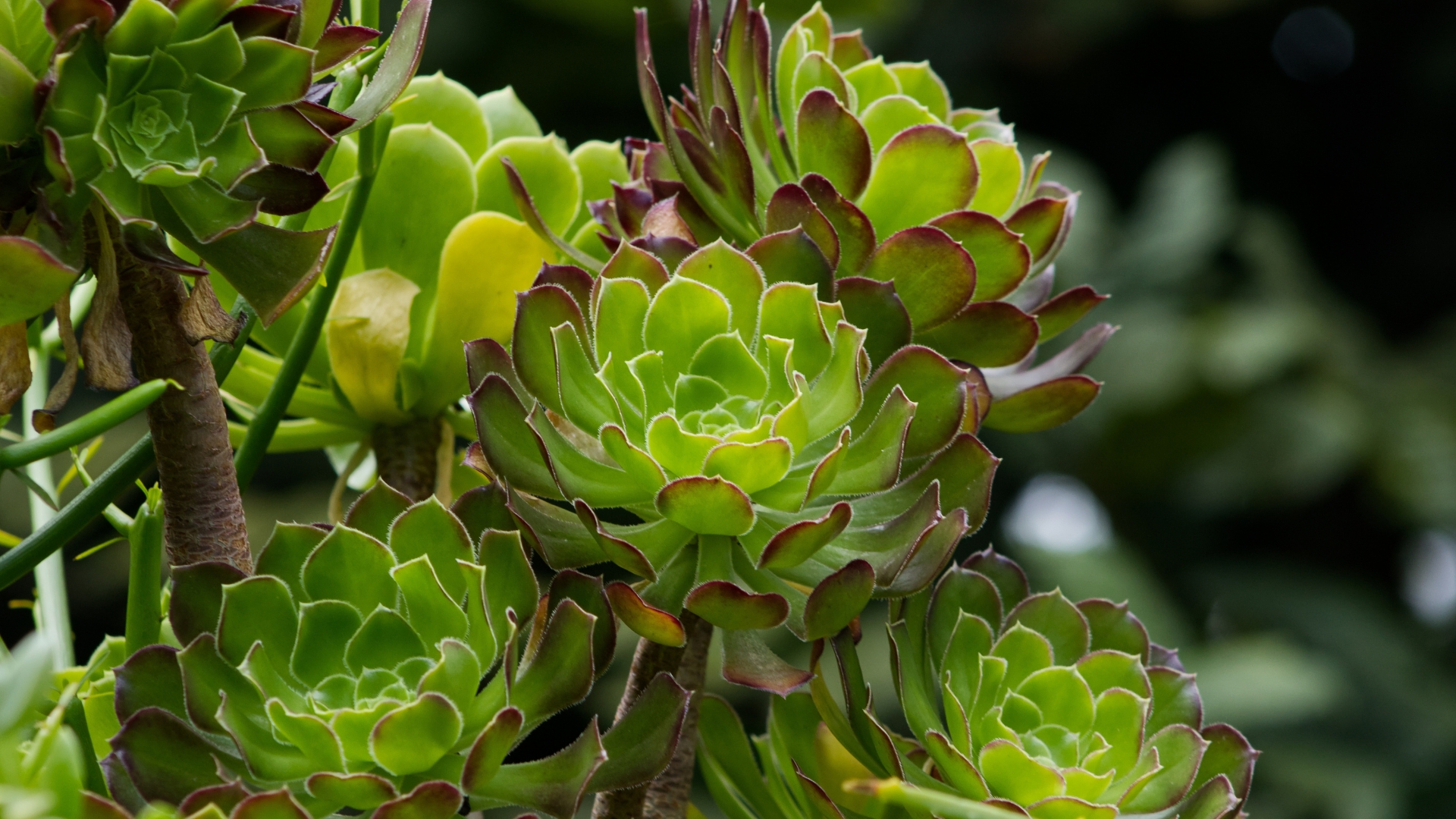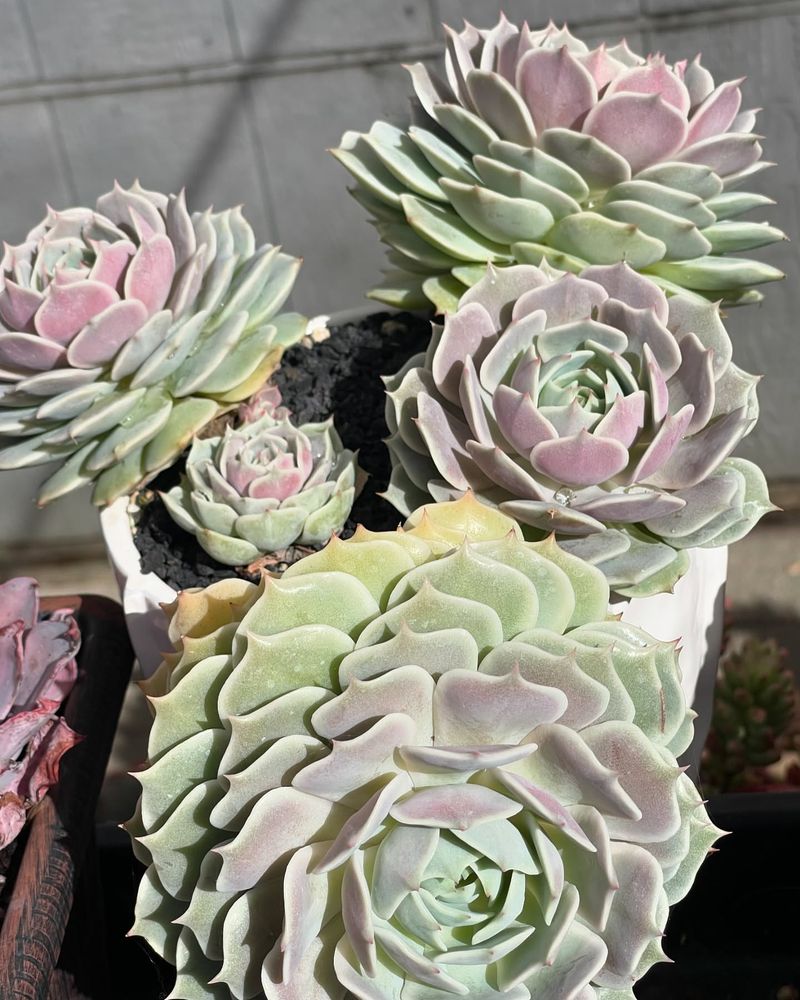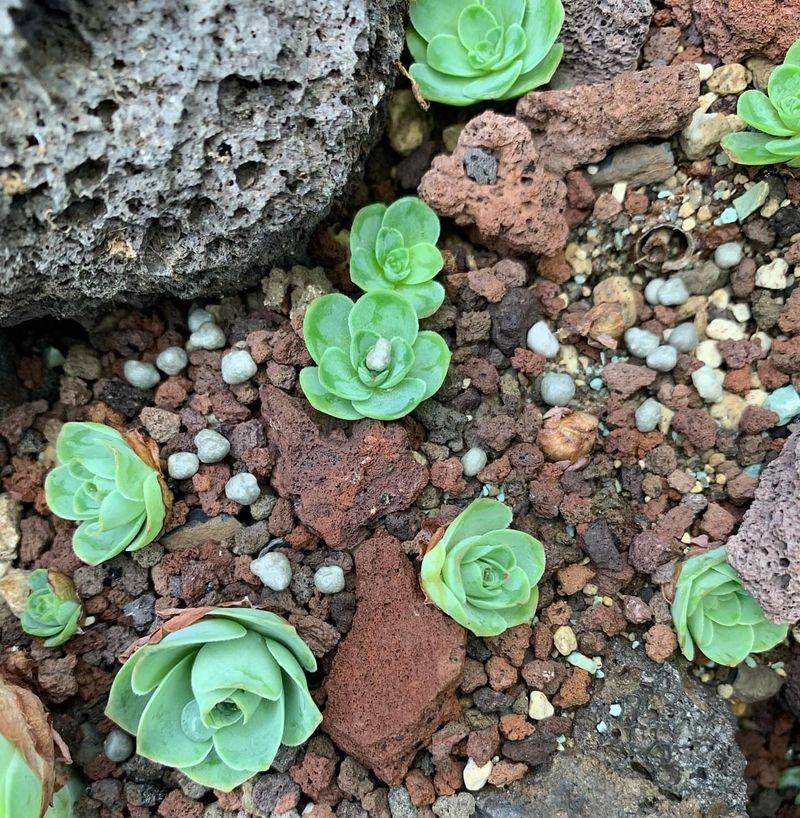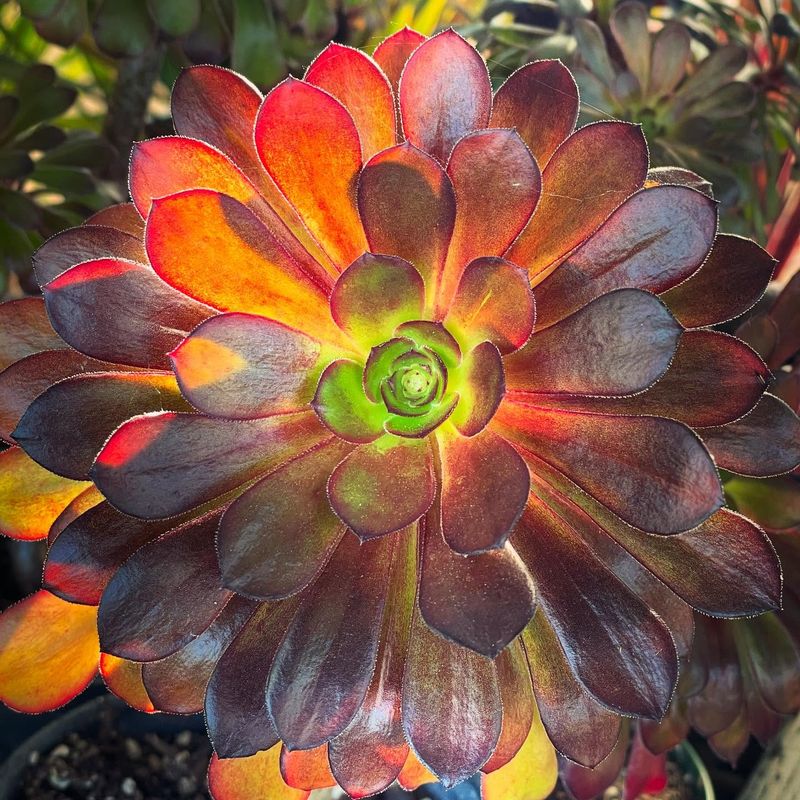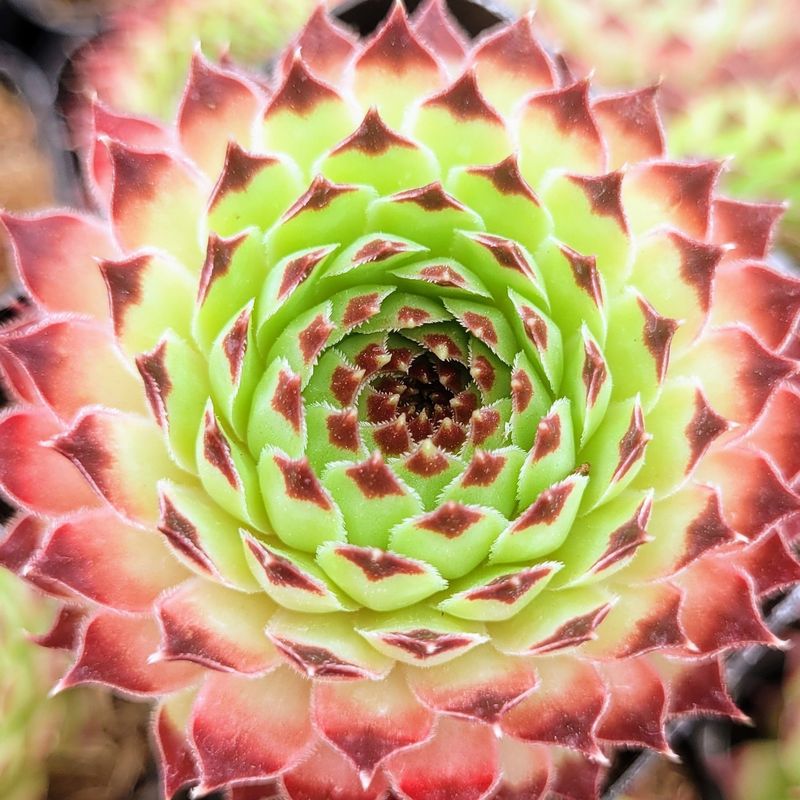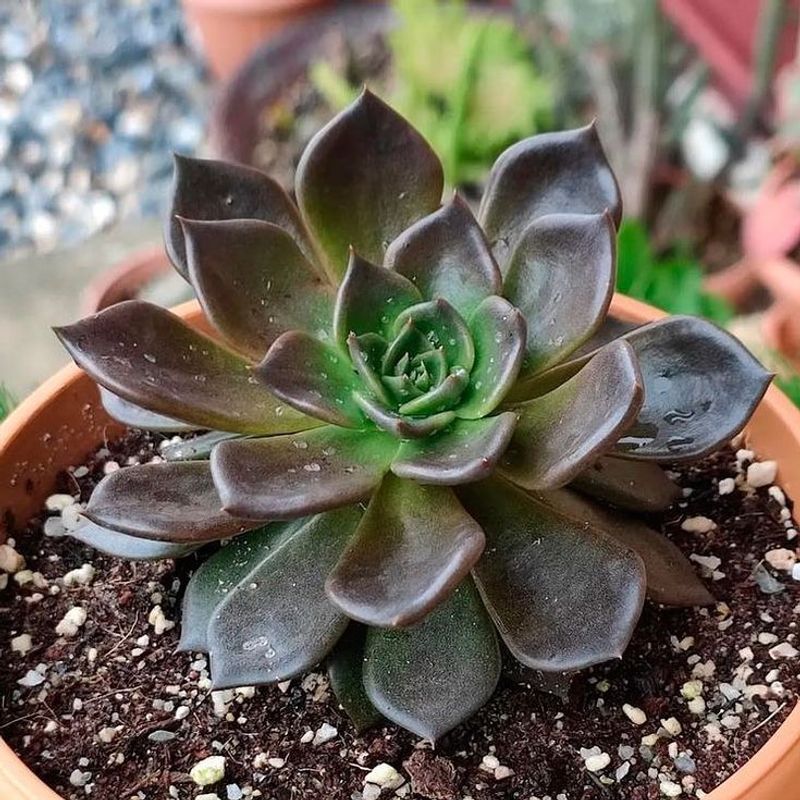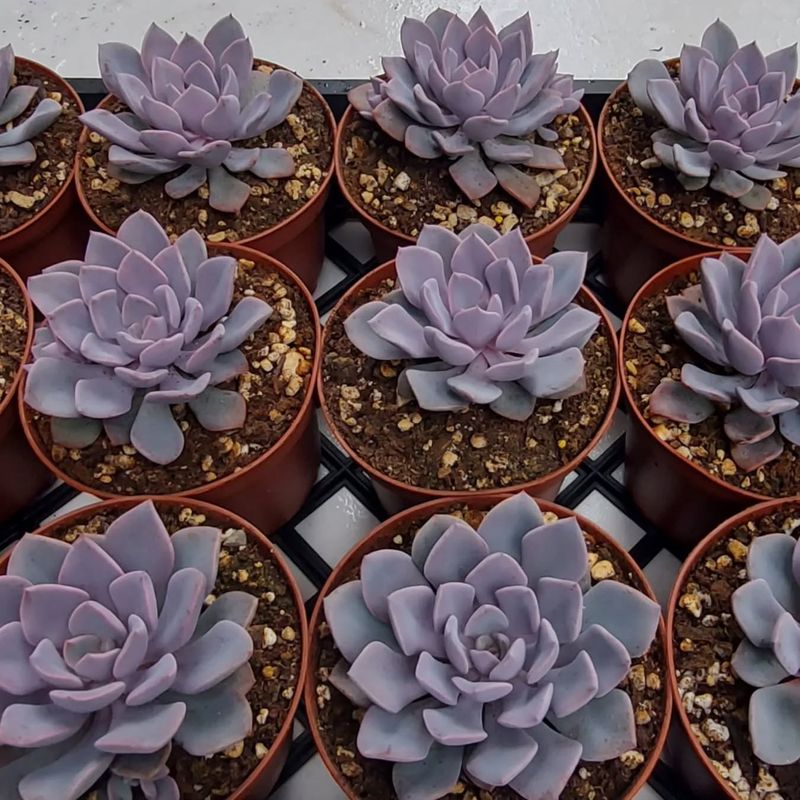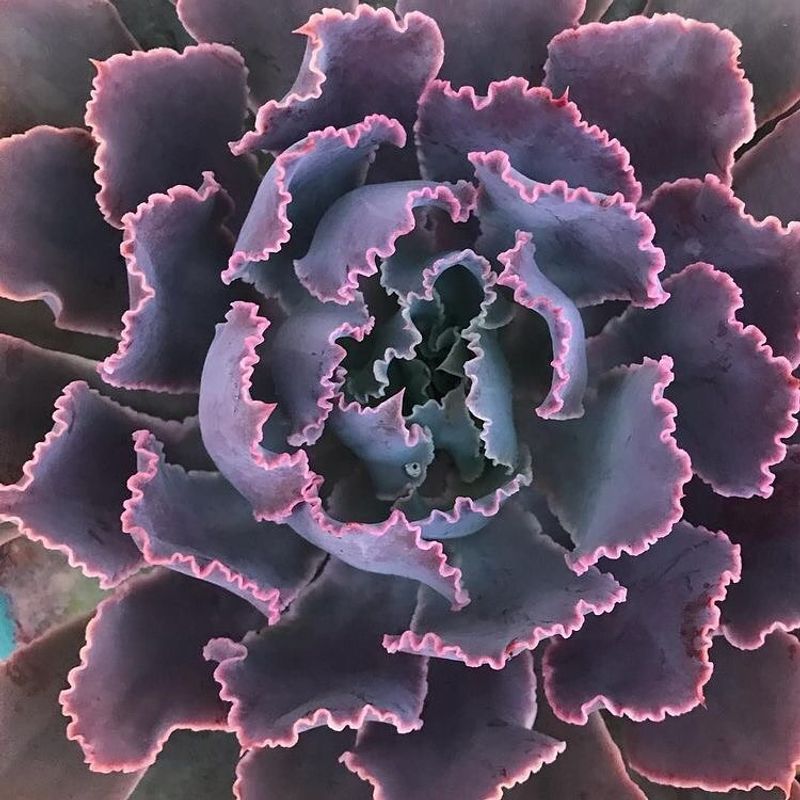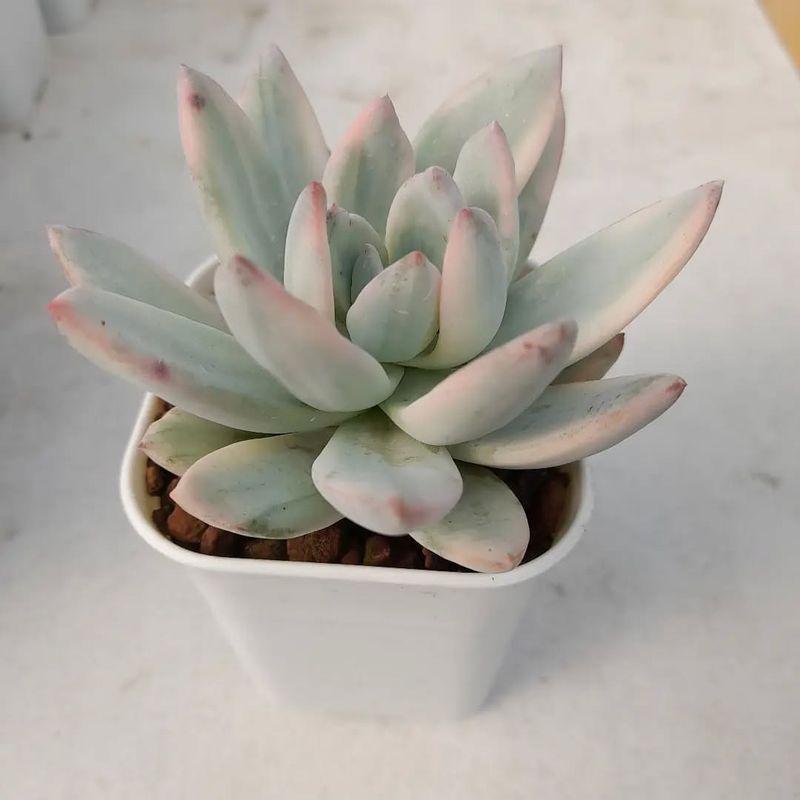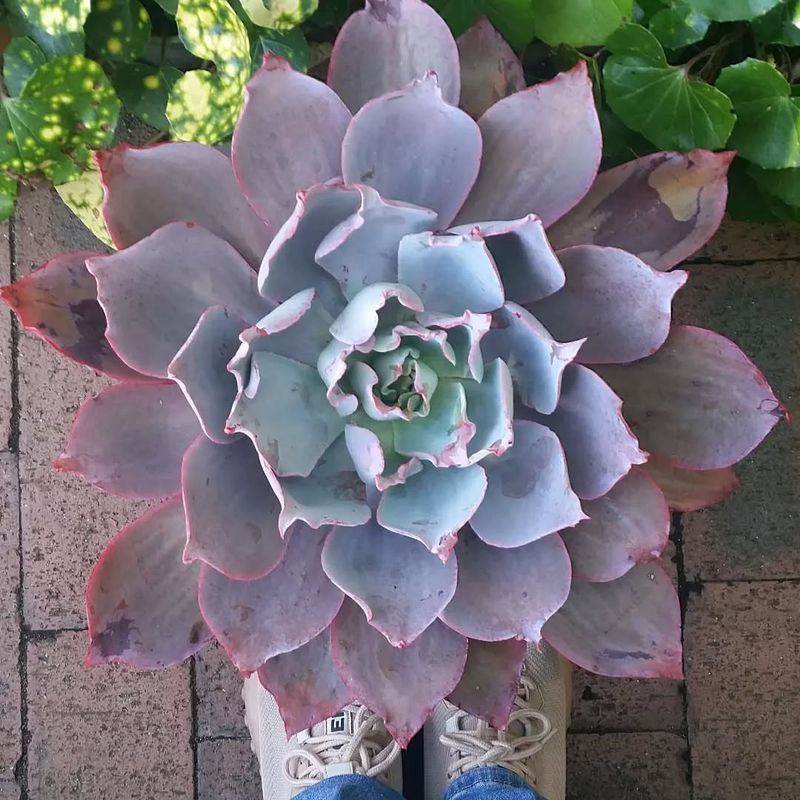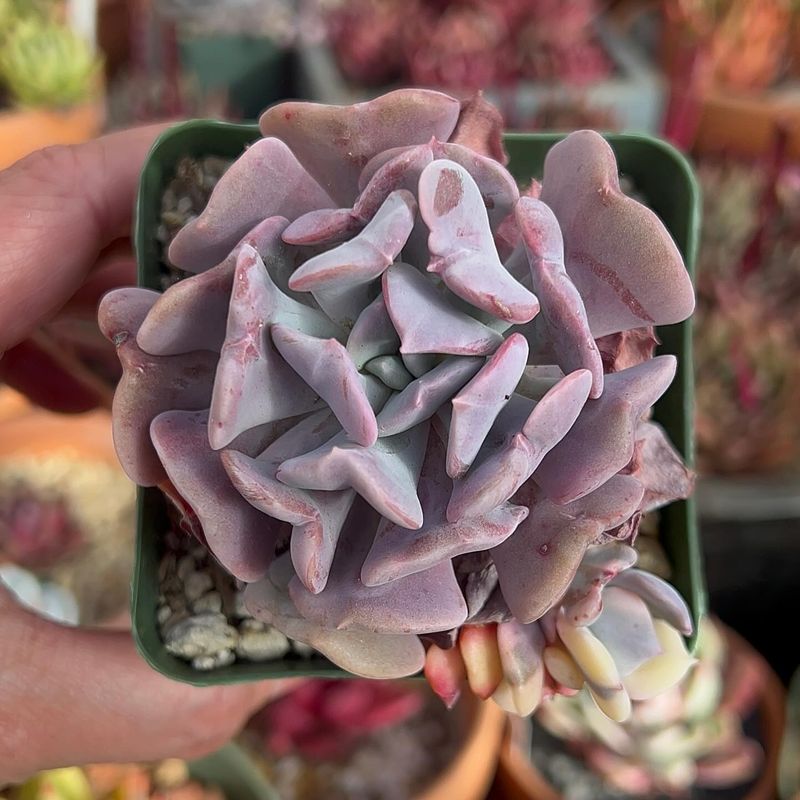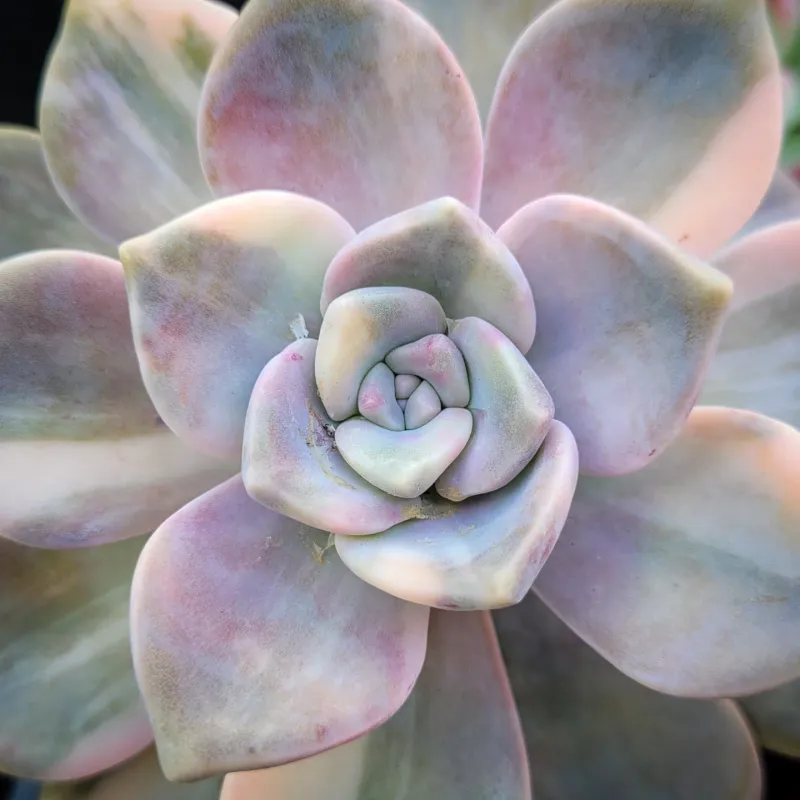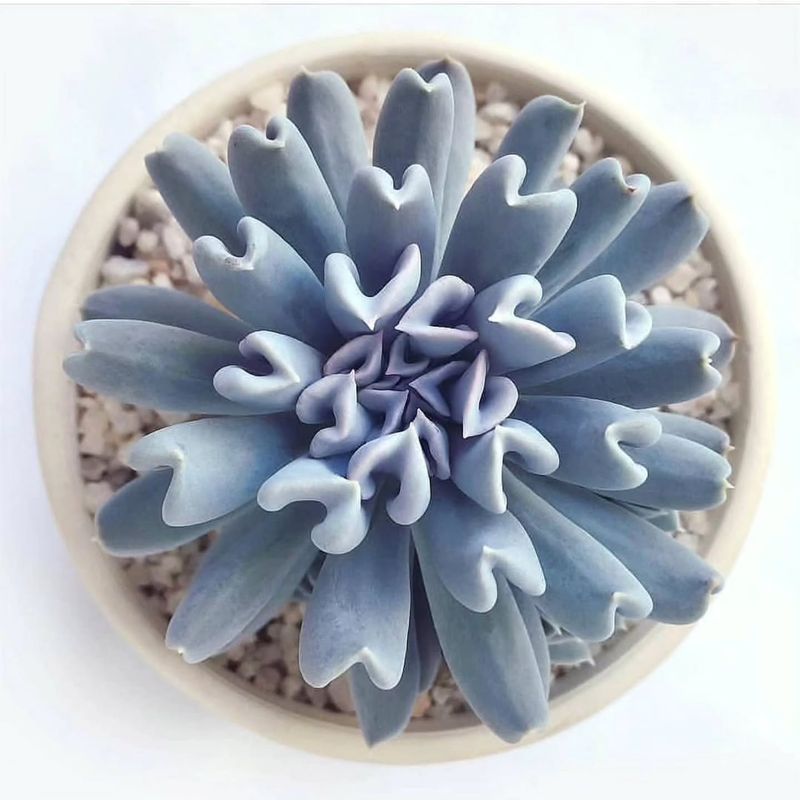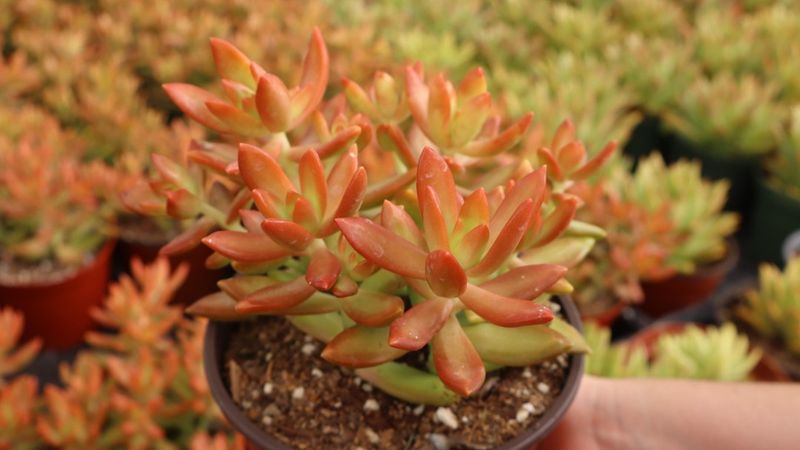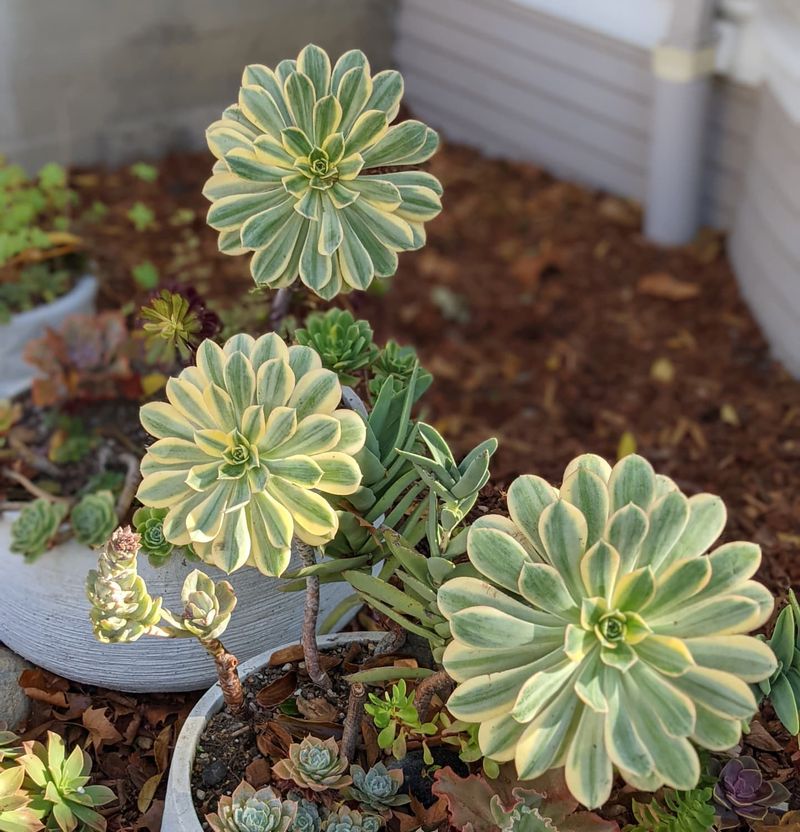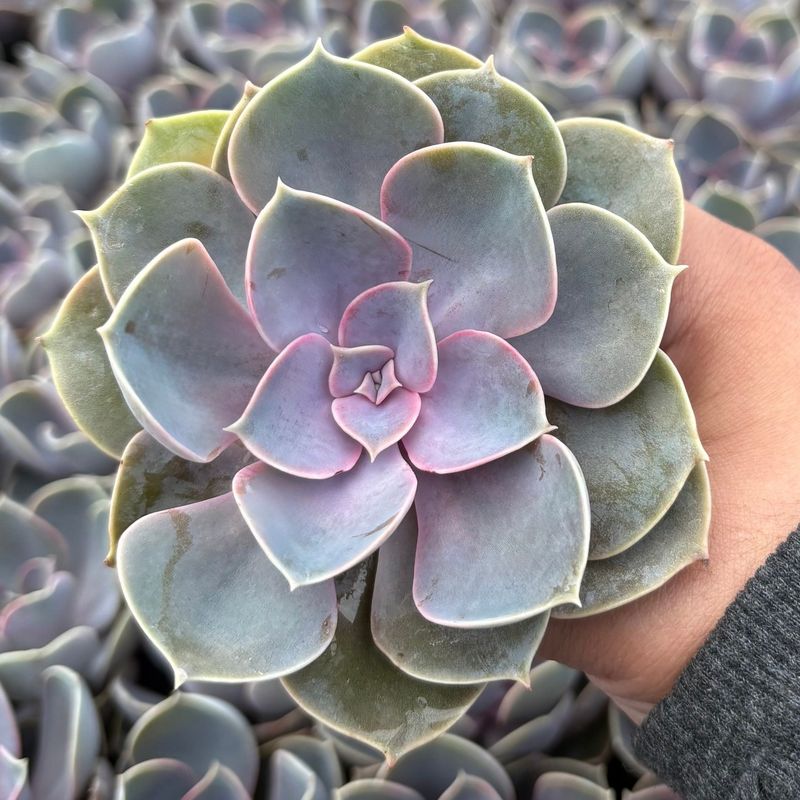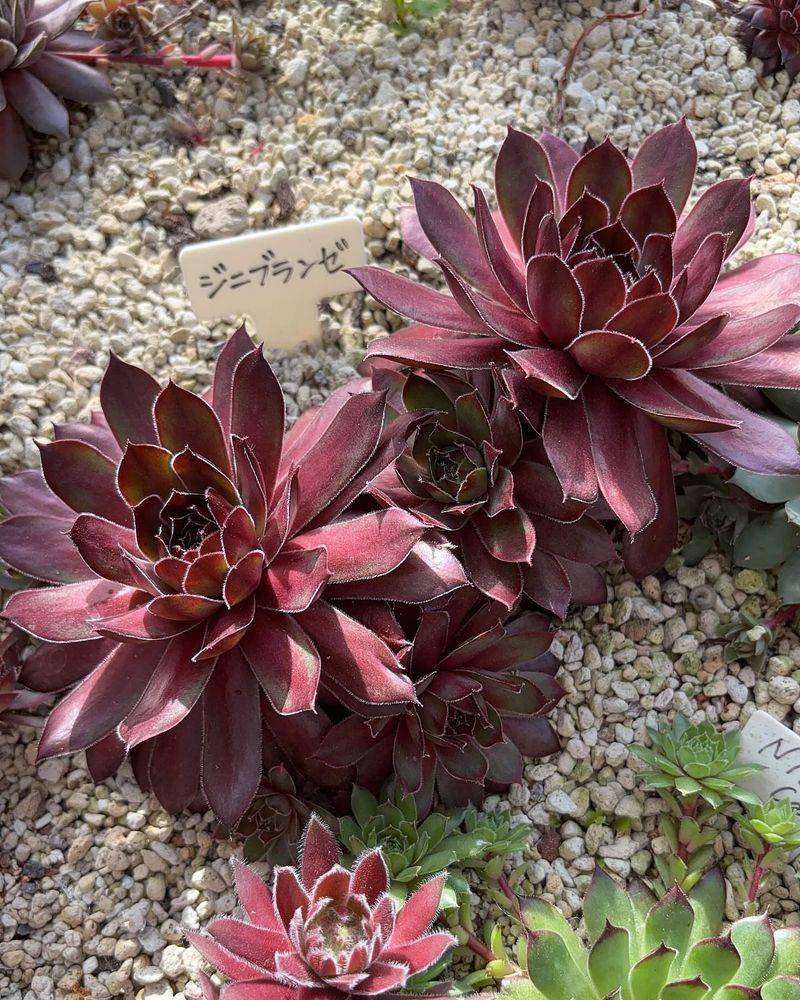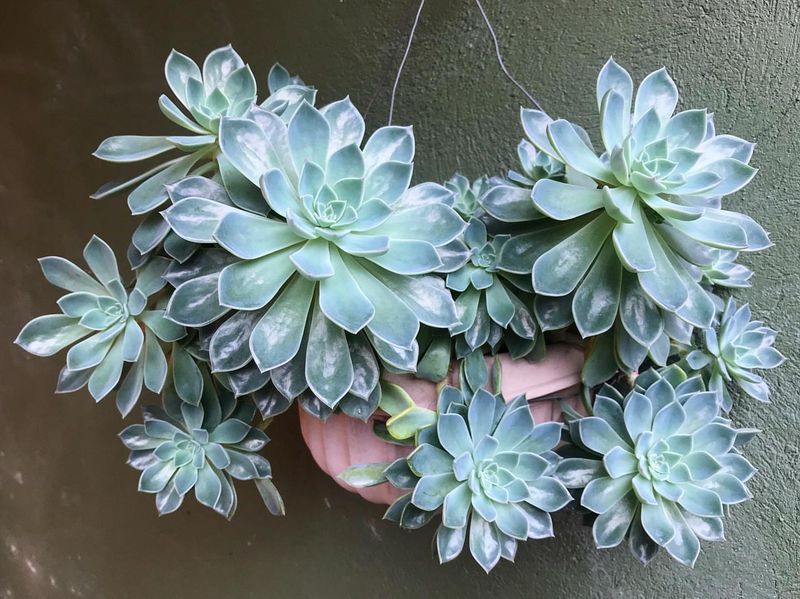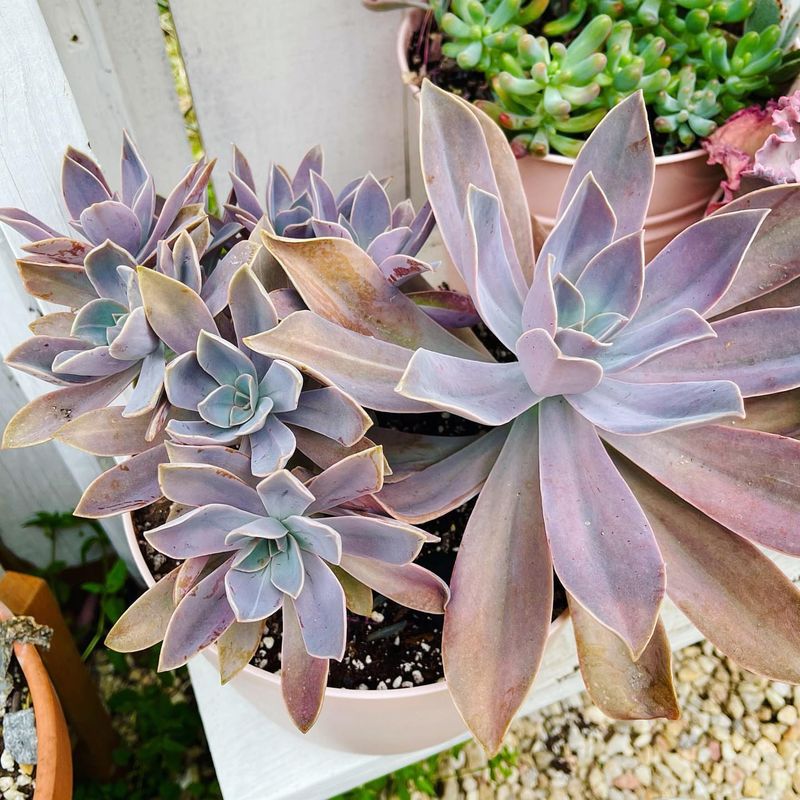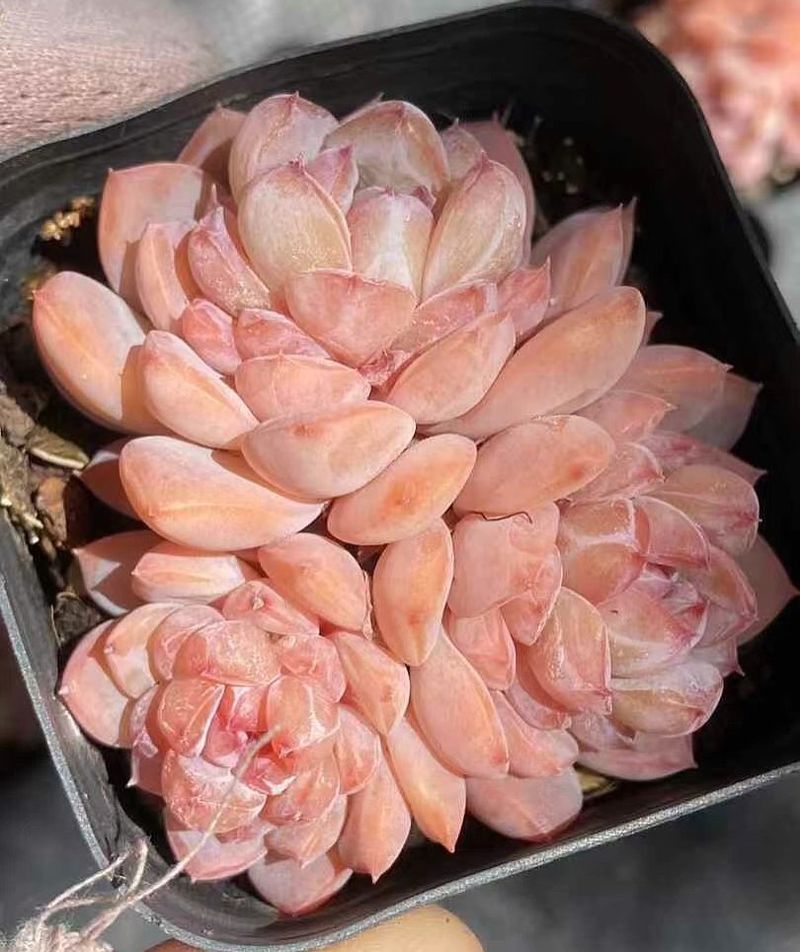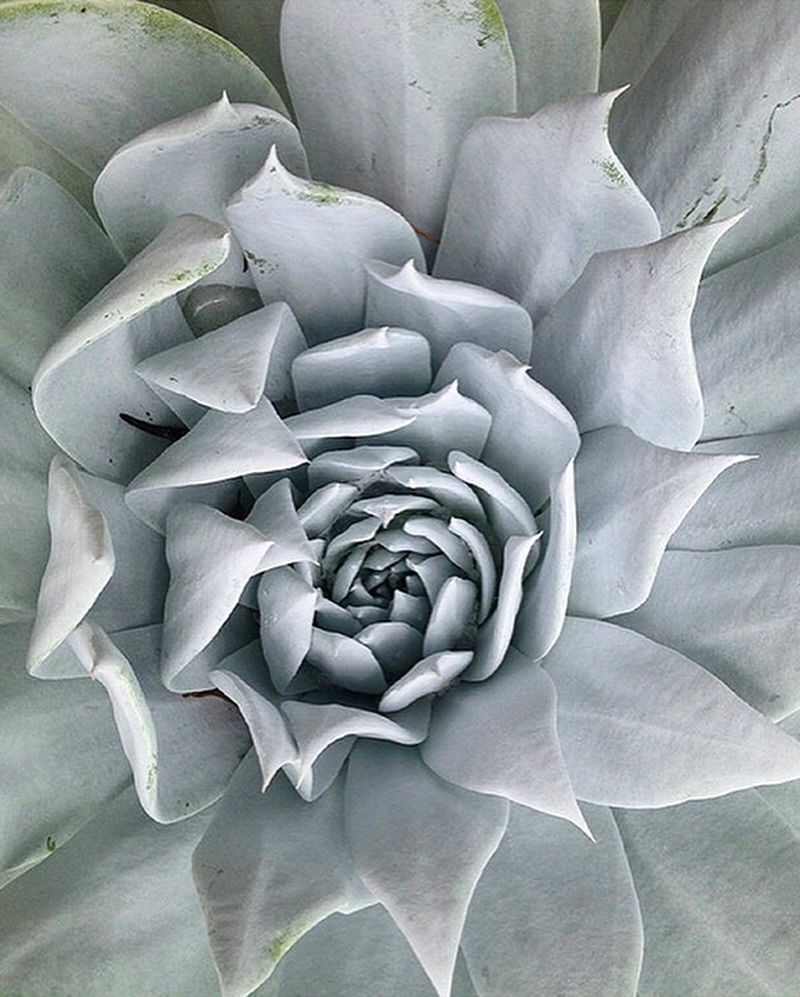Who knew you could get that dreamy rose look without the fuss? These stunning succulents totally pull it off—and they’re way easier to care for. I’ve fallen for their petals and colors, and the best part?
No pruning battles or constant pampering. If you’re after something beautiful and low-maintenance, these rose-like succulents are about to be your new garden crush.
1. Echeveria ‘Lola’
Soft silvery-lavender rosettes create the perfect imitation of a pastel rose bloom. The geometric precision of each leaf creates a satisfying spiral pattern that catches light beautifully.
Simply place in bright, indirect sunlight and water sparingly. These beauties actually prefer to dry out completely between waterings, making them perfect for forgetful gardeners or busy households.
2. Greenovia Dodrentalis
Known as the ‘Mountain Rose,’ this rare succulent forms tight rosettes that look remarkably like green rosebuds. When dormant, the leaves close up even tighter, enhancing the rose-like appearance.
Native to the Canary Islands, these charming plants prefer cool temperatures and partial shade. Water moderately during growing season and reduce significantly in winter for the best results.
3. Aeonium ‘Zwartkop’
Dramatic purple-black rosettes make this succulent look like the darkest roses in existence. The glossy leaves form perfect spirals up to 8 inches across, creating a gothic garden statement.
Unlike many succulents, Aeonium prefers winter growing and summer dormancy. Provide bright light but protect from intense afternoon sun to prevent leaf burn on these stunning dark beauties.
4. Sempervivum ‘Ruby Heart’
Ruby-tinted rosettes glow with intense color, especially at the center where the deepest red hues gather. These hardy succulents form clusters of baby rosettes around the mother plant, creating a bouquet effect.
Thriving in rocky, poor soil conditions, these tough plants can handle extreme temperatures from -30°F to 100°F. Perfect for outdoor rock gardens or container arrangements where their rose-like clusters can be admired.
5. Echeveria ‘Black Prince’
Deep chocolate-colored rosettes with subtle burgundy undertones create a sophisticated, rose-like appearance. The tight formation of triangular leaves creates a perfect geometric pattern that’s mesmerizing to observe.
Growing to about 3 inches in diameter, these compact beauties make excellent desktop plants. The dark coloration intensifies with more sun exposure, though they should be protected from scorching afternoon rays.
6. Graptoveria ‘Debbie’
Powdery lavender-pink rosettes blush deeper at the leaf tips, creating a watercolor effect reminiscent of vintage roses. This hybrid combines the best traits of Graptopetalum and Echeveria parents.
Morning sun brings out the strongest colors in these beauties. Allow the soil to dry completely between waterings, and you’ll be rewarded with a carefree plant that looks like it belongs in a bridal bouquet.
7. Echeveria ‘Neon Breakers’
Electric pink edges on frilly blue-green leaves create a flamboyant rosette that resembles a fancy cabbage rose. The ruffled leaf margins add extra texture and dimension not found in most succulents.
Colors intensify with cooler temperatures and bright light. These showstoppers can reach 8 inches in diameter when mature, making them perfect centerpieces for succulent arrangements or standalone specimens in decorative pots.
8. Pachyveria ‘Powder Puff’
Chubby, rounded leaves covered in a powdery white coating form plush rosettes resembling antique white roses. The soft appearance belies their sturdy nature and drought tolerance.
Handle with care to preserve the delicate powdery coating that helps protect the plant from sunburn. This beautiful hybrid combines Pachyphytum and Echeveria characteristics for a truly unique addition to your succulent collection.
9. Echeveria ‘Afterglow’
Broad, paddle-shaped leaves in powdery lavender with vivid pink edges create a spectacular rosette up to 12 inches wide. The impressive size and coloration make this variety a true showstopper in any collection.
Full sun brings out the most vibrant colors in this Mexican native. Plant in well-draining soil and allow to dry between waterings for a low-maintenance beauty that outshines many actual roses.
10. Echeveria ‘Cubic Frost’
Geometric, upturned leaves with pointed tips create a structured rosette in cool lavender-blue tones. The unique leaf shape gives this variety an architectural quality while still maintaining rose-like symmetry.
Despite its delicate appearance, this hardy hybrid handles temperature fluctuations well. The distinctive leaf curl becomes more pronounced with age, making mature specimens even more visually interesting than young plants.
11. Graptopetalum ‘Purple Delight’
Star-shaped rosettes in shades of lavender, pink, and purple create a cosmic flower appearance. The colors shift throughout the seasons, offering an ever-changing display of pastel hues.
These stress-colored beauties develop their most vibrant tones when slightly water-deprived and sun-exposed. The loose rosette formation allows each leaf to catch light individually, creating a sparkly, dimensional effect unlike any real rose.
12. Echeveria ‘Topsy Turvy’
Spoon-shaped leaves curl dramatically backward, creating a whimsical rosette that resembles an inside-out rose. The silvery-blue color adds to its fairy-tale charm and unique appearance.
Despite its unusual form, this variety is remarkably easy to grow. The curled leaves actually help the plant maximize light absorption while minimizing water loss, making it particularly drought-tolerant even among succulents.
13. Sedum ‘Firestorm’
Tight clusters of tiny rosettes in fiery orange-red create the appearance of miniature spray roses. Each tiny rosette is perfect in form, creating a delightful carpet effect when grown in groups.
This ground-covering variety adds dramatic color to rock gardens or spilling over container edges. The vibrant coloration intensifies in cool weather and full sun, making autumn and spring its most spectacular seasons.
14. Aeonium ‘Sunburst’
Variegated cream and green leaves with pink edges form dinner-plate-sized rosettes that resemble giant, striped roses. The bold coloration makes this variety a standout in any collection.
Unlike desert succulents, Aeoniums prefer winter growing seasons and appreciate regular water during active growth. The rosettes may close slightly during summer dormancy, reopening to full splendor when temperatures cool.
15. Echeveria ‘Perle von Nürnberg’
Dusty mauve leaves form perfect geometric rosettes with a metallic sheen that catches light beautifully. This classic variety remains one of the most popular rose-like succulents for its reliable growth and stunning coloration.
Native to Mexico, these beauties prefer bright light with some protection from intense afternoon sun. The powdery coating on leaves is actually a natural sunscreen called farina—avoid touching to preserve this protective layer.
16. Sempervivum ‘Cebenese’
Tightly packed rosettes in rich burgundy-red resemble classic red roses in miniature form. The color deepens dramatically in cool weather and full sun, creating a jewel-toned display.
These cold-hardy succulents can survive temperatures well below freezing, making them perfect for outdoor gardens in most climates. Their shallow root systems work well in rocky crevices or shallow containers where other plants struggle.
17. Echeveria ‘Blue Atoll’
Powder-blue rosettes with pink-blushed edges create a dreamy, pastel appearance reminiscent of vintage roses. The color combination is particularly striking and has made this variety increasingly popular among collectors.
Growing up to 6 inches in diameter, these medium-sized rosettes make excellent focal points in container arrangements. The cool blue coloration provides beautiful contrast when paired with pink or purple succulent varieties.
18. Graptoveria ‘Fred Ives’
Bronze-purple rosettes with golden highlights create a sunset-colored display that changes throughout the seasons. The color-shifting nature makes each plant unique and ever-evolving in appearance.
One of the easier succulents to propagate, leaf cuttings readily root to create new plants. This fast-growing hybrid can reach impressive sizes, with rosettes up to 8 inches across when given enough space and light.
19. Echeveria ‘Strawberry Ice’
Frosty pink rosettes with deeper rose edges create a confectionery-like appearance that lives up to its delicious name. The compact growth habit makes it perfect for small spaces and mixed arrangements.
Morning sun brings out the strongest pink coloration in this charming variety. The chunky, rounded leaves have excellent water storage capacity, making this one of the more forgiving succulents for beginners.
20. Dudleya Brittonii
Chalky white rosettes with a distinctly silvery sheen create a moonlit rose appearance unlike any other succulent. The dramatic white coloration provides stunning contrast in any garden setting.
Native to coastal Baja California, this species appreciates cooler temperatures and protection from intense heat. The powdery coating is the most pronounced of any succulent, giving it unparalleled drought resistance and a truly unique aesthetic.

